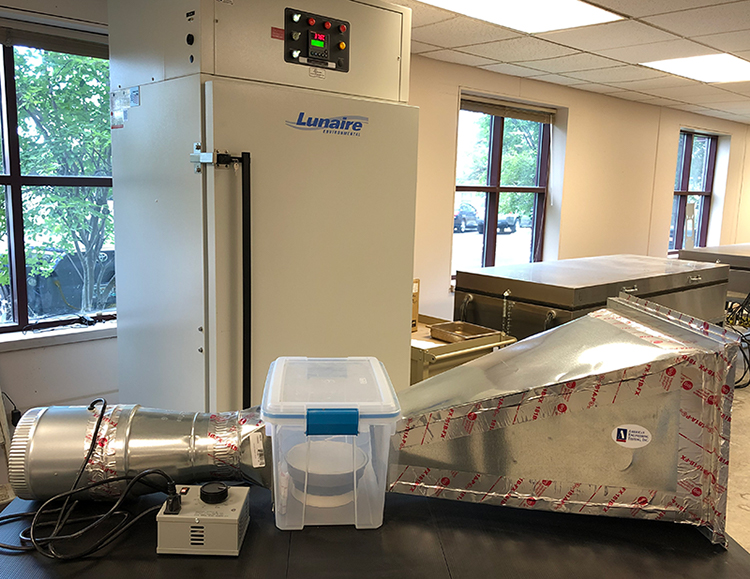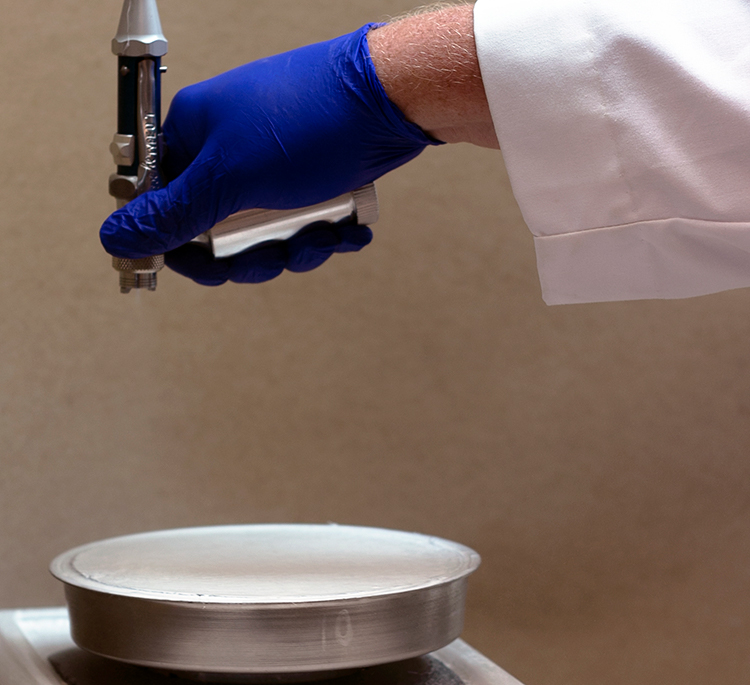Water is a big deal when it comes to concrete.
If water escapes prematurely from freshly placed concrete, the lack of moisture disrupts the cement hydration process. This leads to surface dusting, cracking, and poor abrasion resistance. Thankfully, concrete curing compounds and “cure and seals” are conveniently available to prevent this from happening, without the hassle of the traditional approach – covering it with burlap and keeping it wet with a sprinkler.
The testing of these products, however, can be tricky; there are fewer than a handful of laboratories in the country truly capable of performing these tests. AET is one of those labs.
The American Society for Testing and Materials (ASTM) specifications for these products are:
ASTM C309 – SPECIFICATION FOR CONCRETE CURING COMPOUNDS
Used mainly on highway paving projects, these compounds are typically applied by a sprayer that follows the paving machine. Concrete curing compounds often contain white pigments, which allow them to reflect sunlight. This keeps the concrete surface from getting too hot and prematurely losing moisture.
ASTM C1315 – SPECIFICATION FOR CURE AND SEAL PRODUCTS
Concrete cure and seal products are typically used for decorative patios, sidewalks, driveways, and warehouse floors. Not only do these products protect the concrete surface from construction debris and increase their service life, they also impart a glossy finish that appeals to owners.
Why is performance testing needed?
Our typical clients for these test requests are the manufacturers of these products. Also, state highway departments of transportation often require third party testing of concrete curing compounds and cure and seal products as a part of the application process that evaluates products for addition to a state’s Approved Products List.
Occasionally, we also receive requests from an end-user to confirm they received a product that complies with industry standards.
How do the ASTM tests for cure and seal products work?
The “meat and potatoes” of both tests is the determination of water loss in accordance with ASTM C156. To do this, mortar specimens are made in the lab and placed in a tightly controlled environmental chamber held at 100 degrees Fahrenheit and 32 percent humidity.
Once we achieve specified surface conditions, we apply the product at a specified application rate and then measure the mass loss per unit area at intervals of 24, 48, and 72 hours. Compliant C309 and C1315 products restrict moisture loss to no more than 0.55 and 0.40 kg/m2 in 72 hours, respectively.

If you have questions about how these ASTM standards could benefit your next concrete project, please contact Cyler Hayes, Senior Chemist. He works in the Petrography / Chemistry Department in St Paul, Minnesota. Mr. Hayes can be reached at chayes@teamAET.com.



